This Is The Real Reason We Haven’t Directly Detected Dark Matter

Finding the particle we assume is responsible for dark matter has always been a guessing game. We guessed wrong.
You can’t get mad at a team for trying the improbable, hoping that nature cooperates. Some of the most famous discoveries of all time have come about thanks to nothing more than mere serendipity, and so if we can test something at low-cost with an insanely high reward, we tend to go for it. Believe it or not, that’s the mindset that’s driving the direct searches for dark matter.
In order to understand how to find dark matter, however, you have to first understand what we know so far, and what the evidence points to as far as direct detection goes. We haven’t found it yet, but that’s okay. Not finding dark matter in an experiment is not evidence that dark matter doesn’t exist. The indirect evidence all shows that it’s real. The question before us is how to demonstrate its reality, hopefully by finding the particle responsible for it directly.
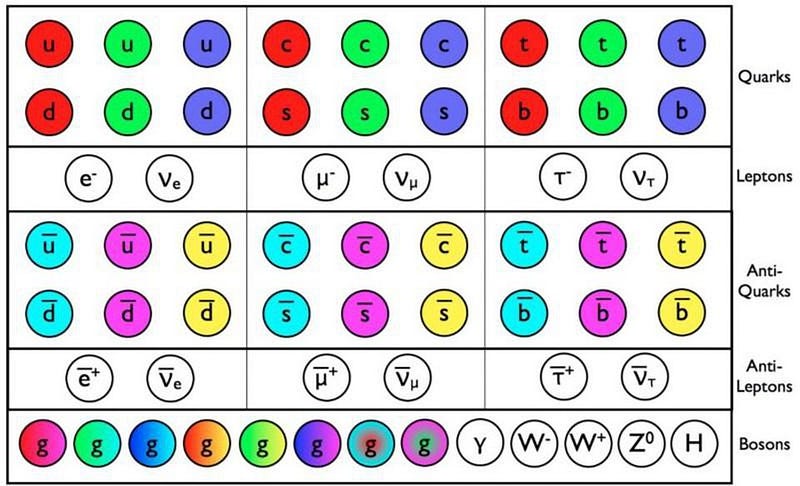
Let’s begin with a basic recap of dark matter: the idea, the motivation, the observations, the theory and then we’ll talk about the hunt.
The idea. You know the basics: there are all the protons, neutrons and electrons that make up our bodies, our planet and all the matter we’re familiar with, as well as some photons (light, radiation, etc.) thrown in there for good measure. Protons and neutrons can be broken up into even more fundamental particles — the quarks and gluons — and along with the other Standard Model particles, make up all the known matter in the Universe.
The big idea of dark matter is that there’s something other than these known particles contributing in a significant way to the total amounts of matter in the Universe. Why would we think such a thing?
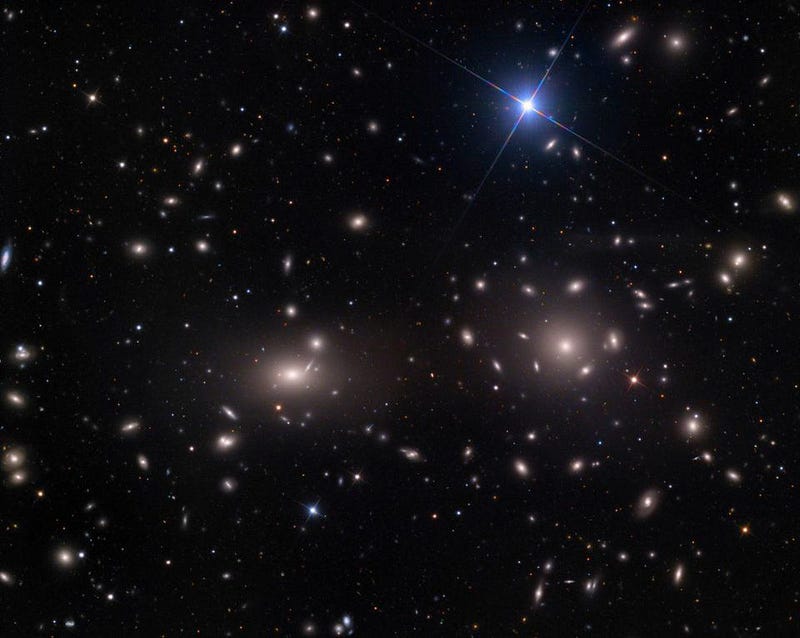
The motivation. We know how stars work, and we know how gravity works. If we look at galaxies, clusters of galaxies and go all the way up to the largest-scale structures in the Universe, we can extrapolate two things. One: how much mass there is in these structures at every level. We look at the motions of these objects, we look at the gravitational rules that govern orbiting bodies, whether something is bound or not, how it rotates, how structure forms, etc., and we get a number for how much matter there has to be in there. Two: we know how stars work, so as long as we can measure the starlight coming from these objects, we can know how much mass is there in stars.
These two numbers don’t match, and they don’t match spectacularly. There had to be something more than just stars responsible for the vast majority of mass in the Universe. This is true for the stars within individual galaxies of all sizes all the way up to the largest clusters of thousands of galaxies in the Universe.
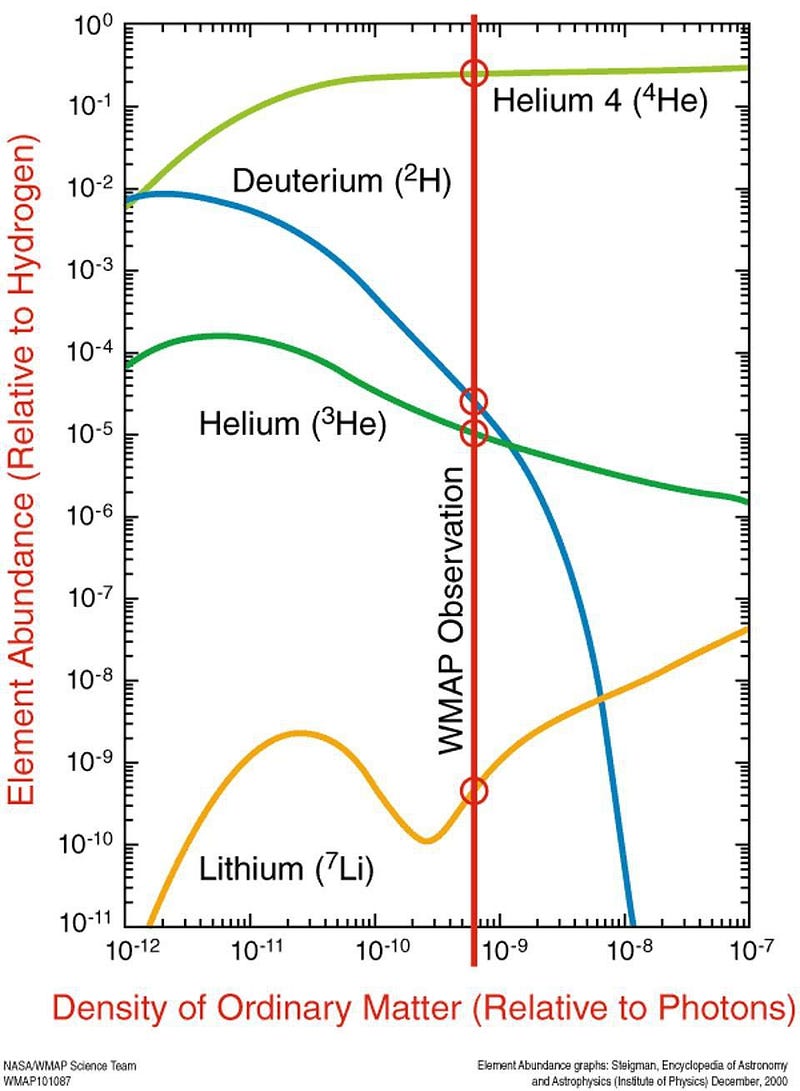
The observations. This is where it gets fun, because there are a ton of them; I’ll focus on just three. When we extrapolate the laws of physics all the way back to the earliest times in the Universe, we find that there was not only a time so early when the Universe was hot enough that neutral atoms couldn’t form, but there was a time where even nuclei couldn’t form! The formation of the first elements in the Universe after the Big Bang — due to Big Bang Nucleosynthesis — tells us with very, very small errors how much total “normal matter” is there in the Universe. Although there is significantly more than what’s around in stars, it’s only about one-sixth of the total amount of matter we know is there.
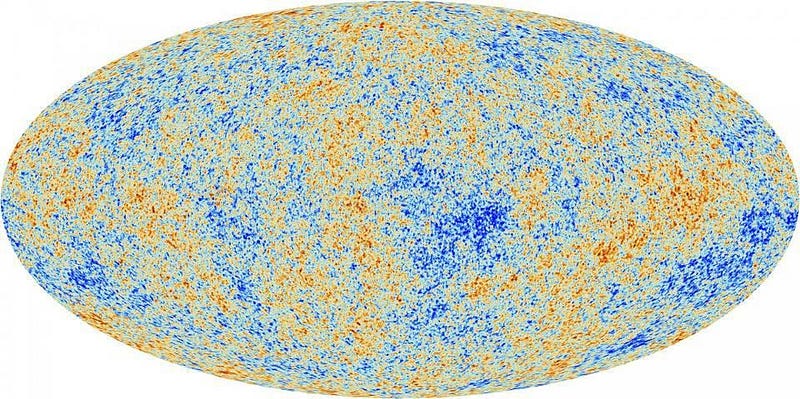
The fluctuations in the cosmic microwave background are particularly interesting. They tell us what fraction of the Universe is in the form of normal (protons+neutrons+electrons) matter, what fraction is in radiation, and what fraction is in non-normal, or dark matter, among other things. Again, they give us that same ratio: that dark matter is about five-sixths of all the matter in the Universe.
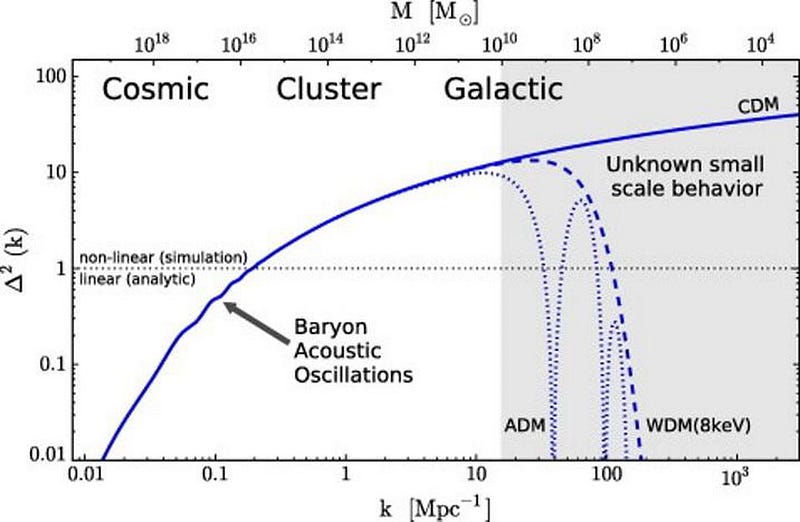
And finally, there’s how structure forms on the largest scales. This is particularly important, because we can not only see the ratio of normal-to-dark matter in the magnitude of the wiggles in the graph above, but we can tell that the dark matter is cold, or moving below a certain speed even when the Universe is very young. This pieces of knowledge lead to outstanding, precise theoretical predictions.
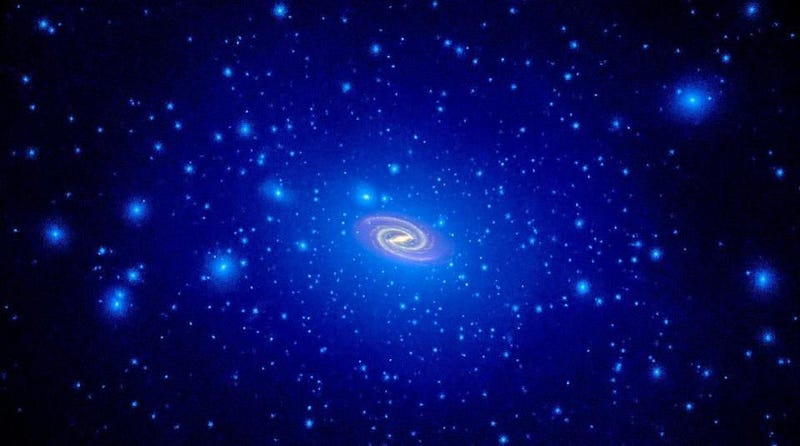
The theory. This tells us that around every galaxy and cluster of galaxies, there should be an extremely large, diffuse halo of dark matter. This dark matter should have practically no “collisions” with normal matter — upper limits indicate that it would take light-years of solid lead for a dark matter particle to have a 50/50 shot of interacting just once — there should be plenty of dark matter particles passing undetected through Earth, me and you every second, and dark matter should also not collide or interact with itself, the way normal matter does.
There are some indirect ways of detecting this: the first is to study what’s called gravitational lensing.
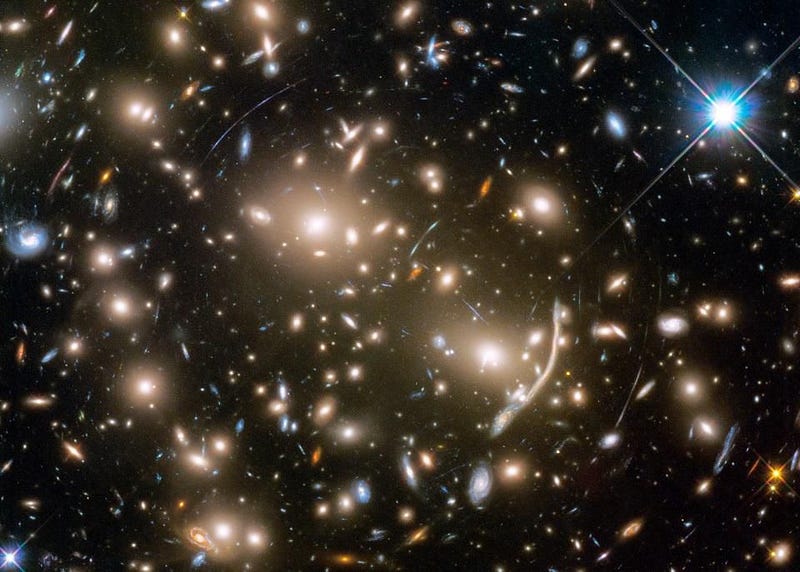
By looking at how the background light gets distorted by the presence of intervening mass (solely from the laws of general relativity), we can reconstruct how much mass is in that object. There’s got to be dark matter in there, but from looking at colliding clusters of galaxies, we learn something even more profound.
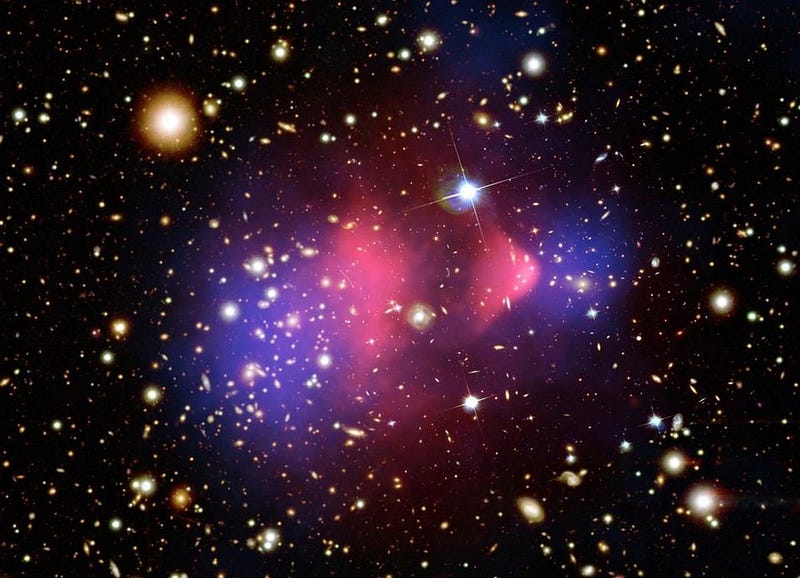
The dark matter really does pass right through one another, and accounts for the vast majority of the mass; the normal matter in the form of gas creates shocks (in X-ray/pink, above), and only accounts for some 15% of the total mass in there. In other words, about five-sixths of that mass is dark matter! By looking at colliding galaxy clusters and monitoring how both the observable matter and the total gravitational mass behaves, we can come up with an astrophysical, empirical proof for the existence of dark matter.
But that’s indirect; we know there’s supposed to be a particle associated with it, and that’s what the hunt is all about.
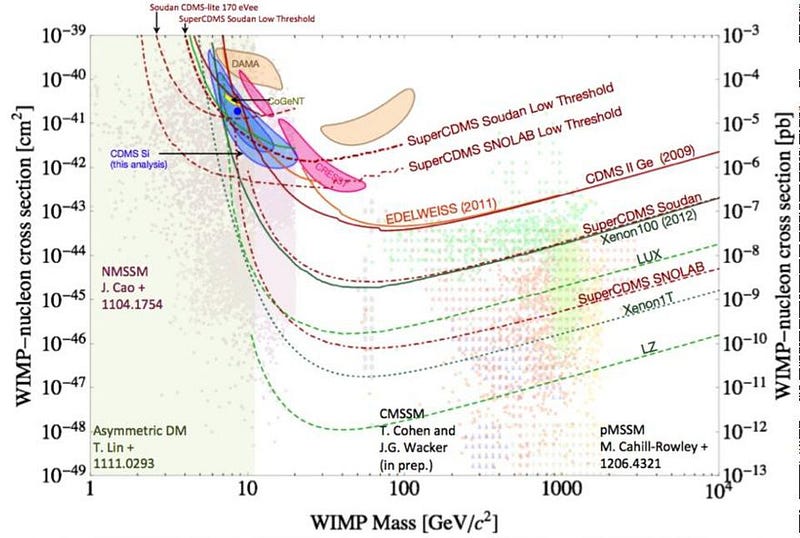
The hunt. This is the great hope: for direct detection. Because we don’t know what’s beyond the standard model — we’ve never discovered a single particle not encompassed by it — we don’t know what dark matter’s particle (or particles) properties should be, should look like, or how to find it. We don’t even know if it’s all one thing, or if it’s made up of a variety of different particles.
So we look at what we’d be able to detect instead, and look there. We can look for interactions down to a certain cross-section, but no lower. We can look for energy recoils down to a certain minimum energy, but no lower. And at some point, experimental limitations — natural radioactivity, cosmic neutrons, solar/cosmic neutrinos, etc. — make it impossible to extract a signal below a certain threshold.

Long story short: the latest experiment to search for dark matter directly didn’t find it, at least not yet. That’s been the story for every direct detection experiment ever performed, confirmed, and robustly tested, over and over again.
And that’s okay! Unless dark matter happens to be of a certain mass with a certain interaction cross-section, none of the designed experiments are going to see it. That doesn’t mean dark matter isn’t real, it just means that dark matter is something else than what our experiments are optimized to find.

So we keep looking, we keep thinking of new possibilities for what it could be, and we keep thinking of new ways to search for it. That’s what science at the frontiers is like. Personally, I don’t expect these direct detection attempts to be successful; we’re stabbing in the dark hoping we hit something, and there are little-to-no good reasons for dark matter to be in these ranges. But it’s what we could see, so we go for it. If we find it, Nobel Prizes and new physics discoveries for everyone, and if we don’t, we know a little more about where the new physics isn’t. But just as you shouldn’t fall for the hyper-sensationalized claims that dark matter has been directly detected, you shouldn’t fall for the ones that say “there’s no dark matter” because a direct detection experiment failed.
We are after the most fundamental stuff in the Universe, and we’ve only recently begun to understand it. It shouldn’t be a surprise if the search takes a little — or even a lot — longer. In the meantime, the journey for knowledge and understanding of just what it is that holds the Universe together continues.
Ethan Siegel is the author of Beyond the Galaxy and Treknology. You can pre-order his third book, currently in development: the Encyclopaedia Cosmologica.





